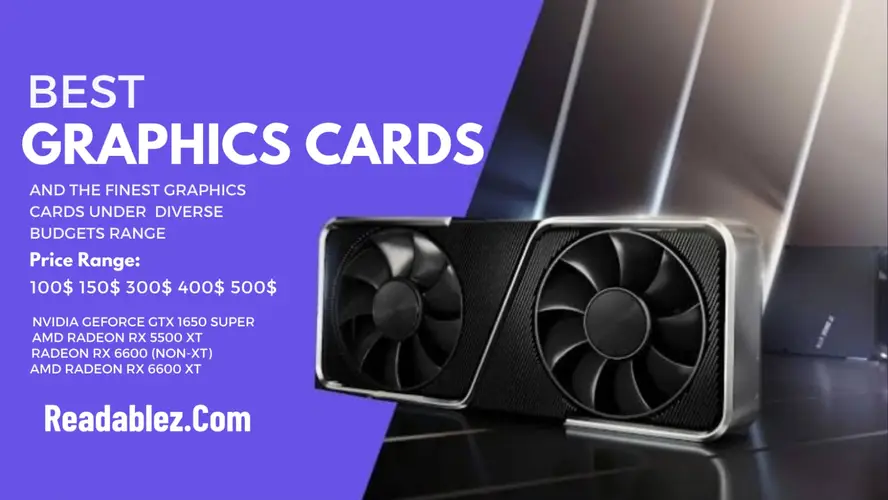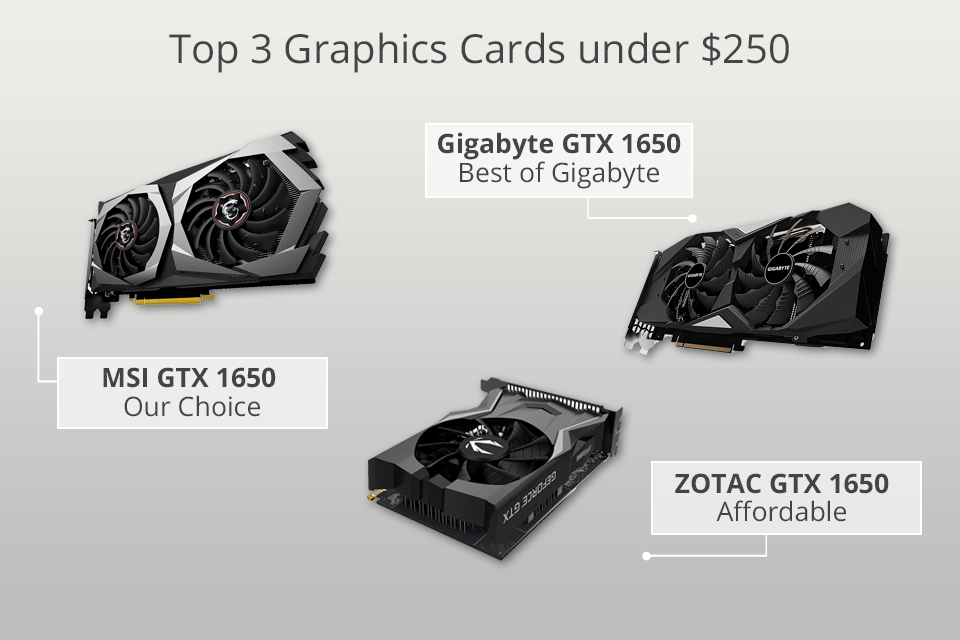Biometric Banking: Revolutionizing Financial Secu…
April 14, 2018

Graphics Cards manufacturing companies adopt cost-effectiveness as a key marketing strategy, like any other industry; resultantly, the GPUs made by these companies are cost-effective. As a marketing strategy, cost-effectiveness broadens the spectrum of targeted customers that belong to different financial strata. In simple words, low-price GPUs would have fewer features and unfortunately, low performance as well while on the other side, high-price GPUs would have more features with extraordinary performance. In short, you pay for the quality.
The way how this cost-effectiveness affects the overall GPU quality and performance is somehow uniform across the different GPU brands. On the basis of this observation, we have categorized the common features of the currently available GPUs along with some examples into different budget strata starting from under $100 all the way to $500 so that you could make an informed decision, and unlock the full potential of your gaming experience.
The Thrifty Monarch (Best graphic cards under $100)
Graphics Cards Under $100: For those on a tight budget, graphics cards under $100 offer minimal performance without advanced settings. While they may not handle the latest AAA titles on ultra-settings, they are perfect for casual gamers and esports enthusiasts. We discuss some of the top contenders in this price range, highlighting their key features and gaming capabilities.
Some Best Graphics Cards under $50:
The Decent Master (Best graphic cards between $150 to $250)
Graphics Cards Between $150 to $250:In the $150 to $250 price range, we find a sweet spot where graphics cards begin to deliver excellent performance without breaking the bank. These mid-range champions can handle modern games in respectable settings, providing a satisfactory gaming experience for most users.
Some Graphic Cards, within $150 to $250:

The Affordable Efficiency in Best graphic cards under $300
Graphics Cards Under $300:As we approach the $300 mark, graphics cards become even more capable, offering improved performance and features. We delve into the best available options within this range, comparing their performance metrics and discussing how they cater to different gaming preferences.
Some Graphic Cards, under $300:
The Potent $400 Range for the best Graphic Cards
Top Graphics Cards under $400:Stepping up the ladder, the $400 range presents even more powerful graphics cards, capable of handling demanding titles at higher settings. We explore the best performers in this category, including their unique attributes and value propositions.
Some Graphic Cards, under $400:
Best graphic cards under $500
Graphics Cards Under $500:For gamers seeking top-tier performance without going over the $500 mark, this range offers an excellent selection of graphics cards. These powerhouse GPUs can handle the most demanding games with ease, delivering breathtaking visuals and smooth frame rates.
Comparing the performances of different budget range graphics cards can be a complex task as it depends on various factors such as:
Benchmark Scores: Examine performance benchmarks from reputable sites such as Tech Power Up, Tom's Hardware, and Anand Tech. These benchmarks will provide quantifiable information on frame rates and graphical performance across a variety of games and applications. When comparing performance, it's essential to look at factors such as:
VRAM (Video RAM) capacity significantly impacts performance,especially at higher resolutions and with demanding textures. Gaming at 1080p usually requires 6GB to 8GB of VRAM, which is typically adequate. However, for smoother 4K gaming experiences, a VRAM capacity of 10GB or more is recommended.
Ray Tracing and DLSS Support (Nvidia Cards):Nvidia's RTX series cards support real-time ray tracing and DLSS technology, which can significantly impact performance in supported games.
Power Consumption and Cooling:High-end cards often consume more power and so generate more heat. Make sure your power supply and PC cooling are adequate for the chosen graphics card.
Price-to-Performance Ratio:Always consider the price of the Graphics Card in relation to its performance metrics. Sometimes, a slightly cheaper card may offer comparable performance to a more expensive one, making it a better value.
Now, let us see a general overview of the performance characteristics for each budget range of graphics cards:
Entry-Level Range (e.g., Nvidia GTX 16XX, AMD RX 5000 Series):
Entry-level graphics cards are suitable for casual gaming, multimedia tasks, and basic productivity. They are budget-friendly options that offer modest performance. They can handle popular esports titles and older games at 1080p resolution with medium to high settings.
Mid-Range Range (e.g., Nvidia GTX 20XX, AMD RX 6000 Series):
Mid-range graphics cards strike a balance between performance and cost. They are suitable for 1080p and 1440p gaming, handling modern games at high settings and providing a smooth gaming experience in most cases. Some models can even handle 4K gaming at lower settings.
High-End Range (e.g., Nvidia RTX 30XX, AMD RX 6000 Series):
High-end graphics cards are designed for gamers who demand top-tier performance and want to experience gaming at 4K resolution with high graphics settings. These cards excel in ray tracing and AI-driven features for more realistic graphics and improved visual fidelity.
Enthusiast Range (e.g., Nvidia RTX 30XX Ti/AMD RX 6000 XT Series):
Enthusiast-grade graphics cards are designed for the most demanding gamers and video makers who demand the finest performance available. They can easily handle 4K gaming in extreme settings, as well as demanding activities like video rendering and machine learning.
The ideal graphics card for your needs will be determined by your specific use case, budget, desired level of performance, and extra services, like the number of monitors/ screens supported. It is crucial to thoroughly examine the most recent reviews and benchmarks before making a purchase decision, as the graphics card market is continuously evolving.
Conclusion:
In conclusion, finding the right graphics card that suits both your performance needs and budget can significantly enhance your gaming experience. Throughout this article, we've explored various graphics card ranges, ranging from budget-friendly options to high-end powerhouses. Graphics cards under $100 cater to individuals on a tight budget, offering unexpected performance that delights casual gamers and esports enthusiasts. Although they may not handle the most recent AAA titles on ultra-settings, they are still more than capable of delivering a gratifying gaming experience to a wide range of users.
Moving up to the $150 to $250 range, we encounter mid-range champions that strike a balance between performance and affordability. These graphics cards can handle modern games in respectable settings, providing a smooth gaming experience for most gamers.
As we approach the $300 mark, graphics cards become even more capable, offering improved performance and features. For gamers seeking to balance performance and affordability, this range provides an excellent selection of options catering to different gaming preferences.
Stepping up further to the $400 range, we find top-tier graphics cards that are capable of handling demanding titles at higher settings. These powerful GPUs deliver impressive performance and visual fidelity, making them a great choice for enthusiasts and gamers who want to experience games at their best.
For those looking to elevate their gaming experience without exceeding the $500 mark, the range under $500 offers an excellent selection of powerhouse graphics cards. These cards can handle the most demanding games with ease, delivering breathtaking visuals and smooth framerates for a truly immersive gaming experience.
Comments
Write a comment